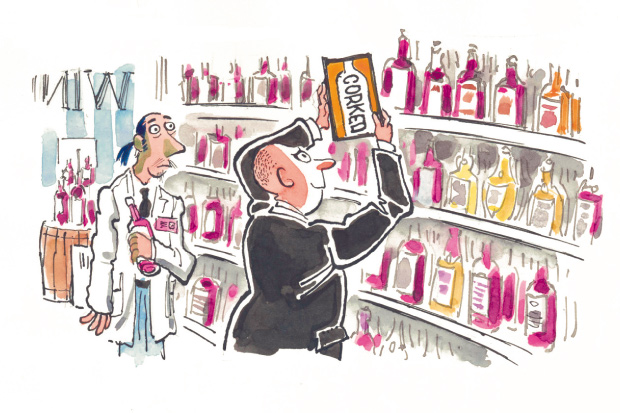After lots of practice, I’ve reached the stage where I can usually tell a good wine from a bad one. But there’s an awful lot of bluffing involved. If I’m asked for an assessment, I mutter something about ‘tannins’ and ‘structure’, while eyeing the bottle for the alcohol content and price. A good-looking label helps too: simple but classy, with a hint of grandi-loquence lurking at the periphery.
It’s people like me who are likely to benefit most from the spate of wine scanner apps hitting the market, challenging the expertise of wine buff show-offs. These apps analyse bottle labels and provide information about the wine, region, grapes, price and food pairings. For those keen to learn more about the industry, or fake a level of expertise they can never genuinely hope to possess, it’s a great idea — if, at the moment, rather a flawed one.
The apps I tested were Vivino, Delectable, Wine Searcher, Corkbin, Snooth Pro, Hello Vino and Drync. Of these, the clear frontrunners are Vivino, Delectable and Wine Searcher. Of the others, Corkbin looked good, but was notably unconcerned about identifying any of the six wines I tested, while Snooth Pro froze immediately after accepting £2.99 of my generously proffered cash. Hello Vino also made me cough up — $0.99 for each set of five scans — but could not identify two of the wines, did not differentiate them by vintage and provided sparse details about each. Drync, a free app, was similarly apathetic about vintages and also failed to recognise two at the first try (though it later did).
Of the three pacemakers, Vivino seemed the most impressive. This app is the veteran of the marketplace, having been around for five years, and has more than half a million wines in its database. While it got one wine wrong, even spelling it incorrectly (‘Pouily–Fumé Champalouettes’), the rest were correct, though quick tweaks to the vintage were needed for three of them. What set this app apart from the others, however, was the extensive information provided about each bottle, which included other wines available in the winery, comparisons with other vintages and detailed ranking information.
Delectable, which was upgraded about a month ago, was a very close second. It found all six wines without a problem, but I had to input the vintages myself and two of them were missing from its records. The data available also seemed less detailed than its older competitor, including a lack of price information. However, according to Master of Wine and app aficionado Richard Hemming, Delectable’s policy of asking real people (!) to identify wines when the automated system fails ‘works pretty much flawlessly’. He also points out that Delectable’s social media capabilities are by far the strongest of the group — so if you’re seeking a more appreciative audience, this may be the app for you.
Nipping closely at Vivino and Delectable’s heels is the Google of wine websites: Wine Searcher. This has traditionally been used as a straightforward search engine to locate retailers, but the new scanning function, launched only a few weeks ago, is already showing great potential. It has not yet attempted to tackle vintages, but its gargantuan database — over four million wines, only a small portion of which are yet searchable by image — mean it may shortly be stealing the show. Even at this stage it correctly identified all six wines, and was excellent on the functions for which the website has become known: finding sellers, prices and ratings.
Noticeably missing from Wine Searcher, however, are functions that allow you to build up a profile and share comments with peers. If you’re like me and have always suspected the world of wine mastery to be rather suspect, then this is a problem. Just as the correlation between income and happiness apparently levels off at $75,000, a bigger wallet does not necessarily equate to a better tipple above a certain threshold, in my view. One man’s so-so cheap claret is another man’s spectacular bargain.
Surprisingly, Hemming agrees. The threshold is £30, he says: above that, it’s anyone’s game. ‘Up to about £30, you can break down the costs of producing a wine. Oak, for example, can add two to three euros per bottle. Then labour costs, land prices and so on. Beyond £30, it’s purely market driven, and there’s absolutely no objective way of saying that a £1,000 bottle is 100 times better than a £10 bottle.’
Charlie Bennett, e-commerce director at Berry Bros & Rudd, believes that the master sommeliers whose nasal passages have historically set the agenda would be well advised to keep abreast of wine apps. The average wine app user is between 20 and 40 years old, with the potential to transform the traditional wine-drinking demographic. ‘Everyone now has a voice through social media, and the voice of the crowd is a very persuasive one.’
Very soon the best qualities of Vivino, Delectable and Wine Searcher will be combined to form a killer wine app, one that allows users to input their wine collection and have it peer reviewed. But we’re not quite there yet. Until then, I’ll stick to what I do best: making vague but confident-sounding statements about supermarket plonk in the privacy of my own home.






Comments